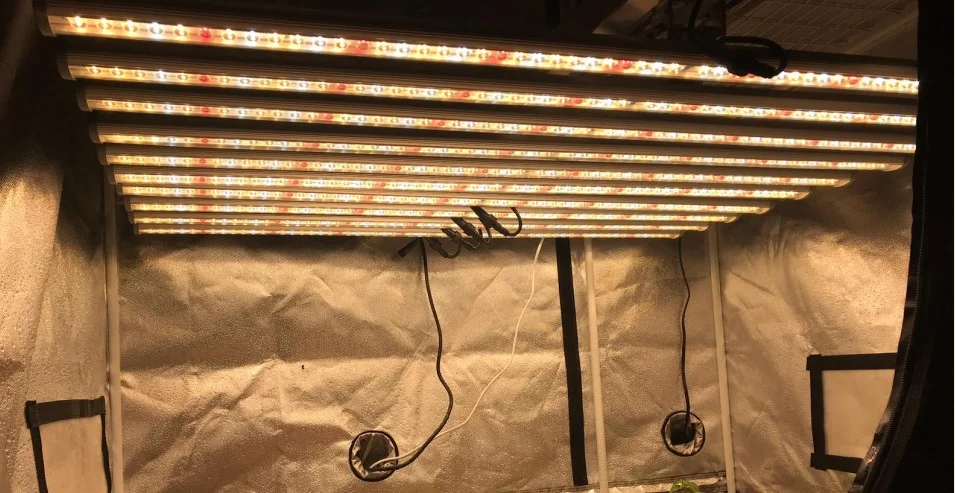On plant development what is impact of Green light?

For plant development, let's first understand the Absorption Spectrum vs Action Spectrum
The first thing that springs to mind when people think about LED lighting for horticulture is a purple glow coming from a fixture with red and blue diodes. Have you ever wondered why red and blue diodes have traditionally been the semiconductors of choice for lighting manufacturers? This purple glow may be the industry standard for horticultural LEDs. Because of chlorophyll a and b’s absorption spectra (which reach their maximums in the blue and red portions of the electromagnetic spectrum, respectively), several manufacturers provide purple-colored spectrums.

At first sight, this appears to make sense given that chlorophyll is the driving force behind photosynthesis. But, have you given any thought to the method that is used to determine the absorption spectrum of chlorophyll? Have you also pondered if the absorption spectrum of chlorophyll has a direct correlation to photosynthesis and the growth of plants, and what happens if you just target one pigment while ignoring the pigments that are important for the growth and plant development? In this post, the distinctions between the absorption spectrum and the action spectrum will be discussed, and the misconception that “plants don’t use green light” to support plant growth and plant development will be debunked (spoiler warning).
Spectrum of Reactions found on plant development
The study that was done in the 1970s by Drs. McCree and Inada resulted in the creation of the action spectrum of photosynthesis, and this work was essential in defining the range of photosynthetically active radiation (PAR). Before this study, very little effort had been done to identify how the different wavelengths of light affected the process of photosynthesis and the plant development. These researchers used filters to generate monochromatic wavebands in order to examine the effect that different light spectra have on the process of photosynthesis carried out by individual leaves by use of an assimilation chamber. If you look at figure 2, you will observe that plants do, in fact, make use of green light for photosynthesis, and that they do it fairly well.

If chlorophyll is the substance responsible for photosynthesis, then it begs the question: why is there such a large gap between the spectrum of absorption and the spectrum of action? The solution is rather straightforward: There are other types of photoreceptors than chlorophylls that are necessary for photosynthesis to occur.
Other kinds of antenna photoreceptors, primarily carotenoids, also play a role in the promotion of photosynthesis; however, when narrow-band red/blue LEDs are used as the primary source of illumination, these pigments are unable to maximize their light-collecting capacities. Greenlight does, in fact, stimulate photosynthesis in chlorophylls, and it does so rather well. This is something more that has to be pointed out.
Greenlight is able to penetrate deeper into leaf surfaces to promote photosynthesis in chloroplasts positioned nearer the bottom surface of the leaf, in fact more effectively than red light at high photosynthetic photon flux densities (PPFD). Recent research has proved this to be the case. The light energy that is received in the higher chloroplasts has a tendency to be lost as heat as PPFD rises.
However, green light that penetrates deeper into the mesophyll promotes photosynthesis by activating chloroplasts that are positioned deeper inside the mesophyll (Terashima et. al., 2009). Additionally, green light is superior to red or blue light in its ability to pass through the leaf surfaces and reach the lower canopy. This is a factor that is of the utmost significance in dense canopy production techniques, which are typically utilised in agriculture conducted in controlled environments.
Conclusion on Green light imact on plant development
So, what exactly does all of this imply for the cultivator? In spite of the fact that we are just in the beginning stages of comprehending how plants make use of light and that we are currently striving to comprehend how various photoreceptors operate and interact with one another, the fact of the matter is that plants most certainly do make use of green light.
Your growing environment will not be optimized if the spectrum that is being delivered by your horticulture lighting system is one that ignores photoreceptors that absorb light in the area of 500-600 nm (this is particularly true in situations in which a single source of lighting is being used). If you are interested in learning more about the spectrum that Fluence Bioengineering incorporates into their lighting fixtures, you may do so by clicking here.
Luxint found the great responce of Luxint LED light on plant development.
Contact us for understanding the research in detailed about the plant development.



